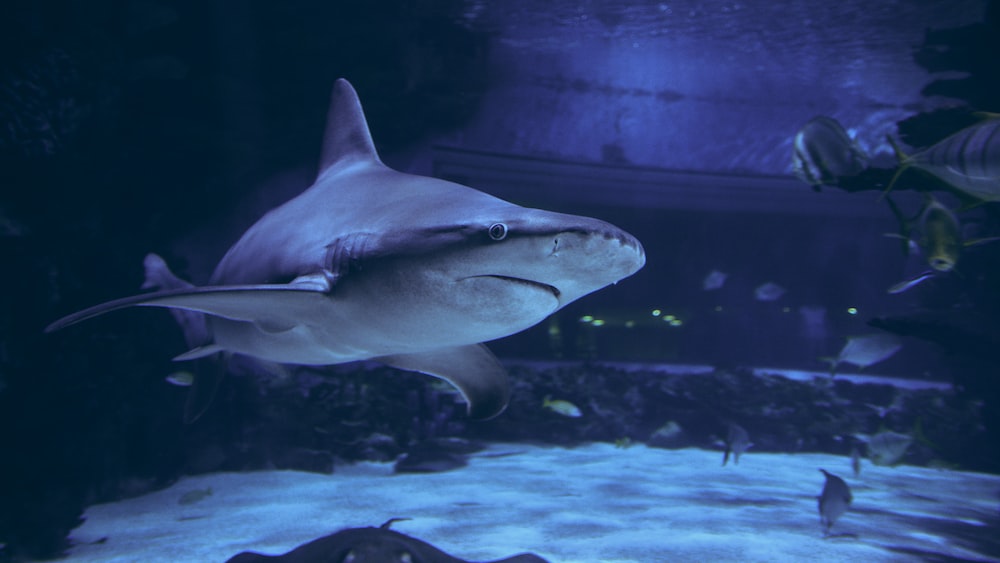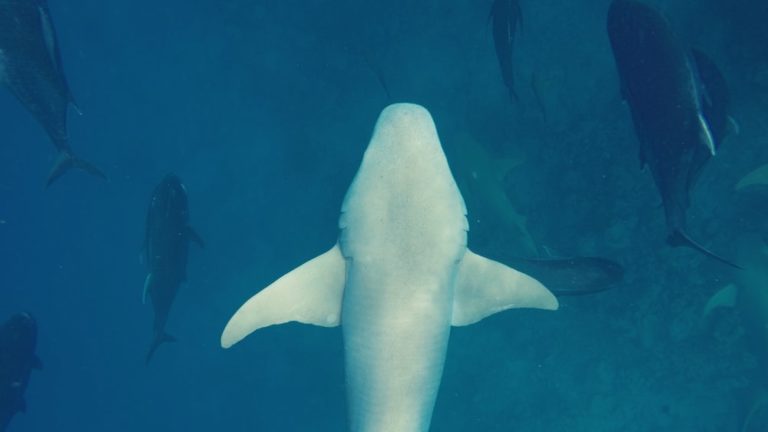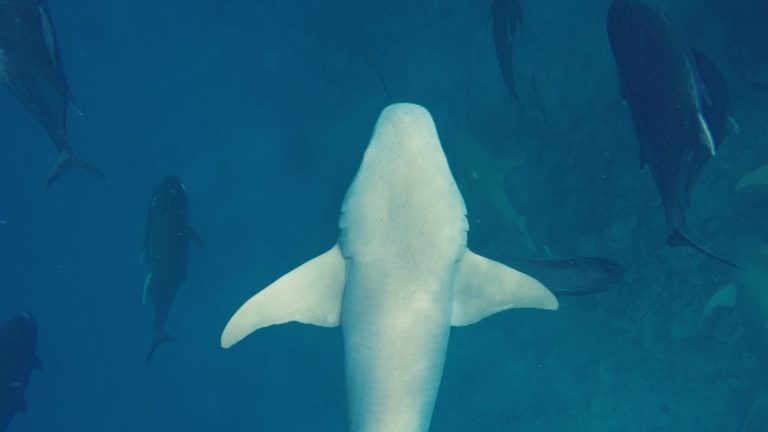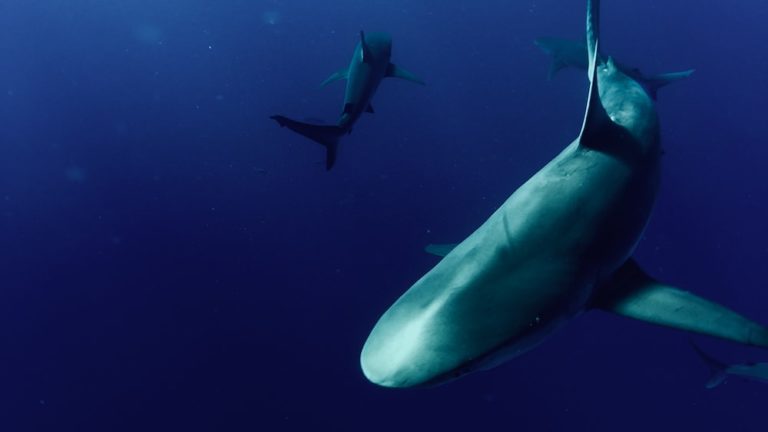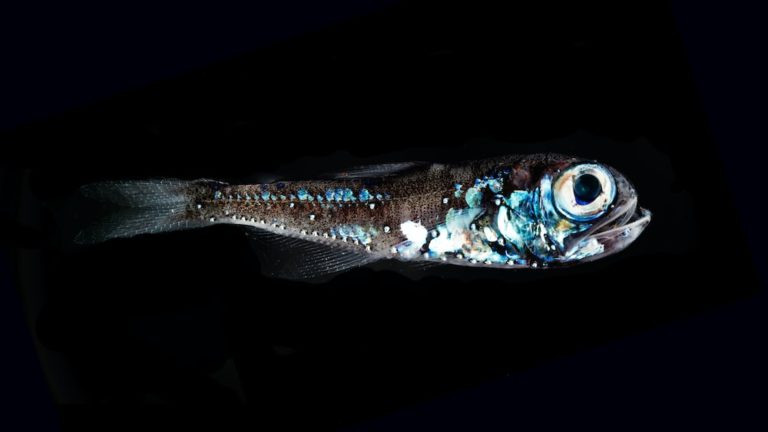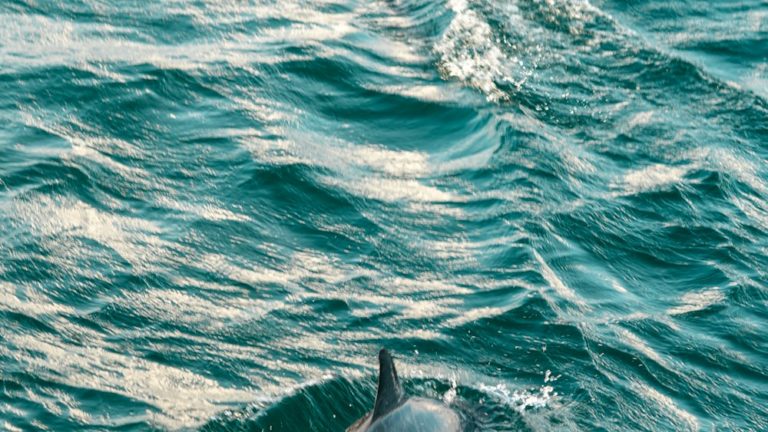How Does A Shark Adapt To Its Environment: Unveiling The Secrets
How Does A Shark Adapt To Its Environment: Unveiling The Secrets
Imagine you’re a nomad of the deep blue sea, effortlessly gliding through the aquatic savannah – welcome to the shark’s world. How does a shark adapt to its environment? This question opens the portal to an extraordinary universe, where these ancient mariners have finessed the art of survival over the eons through remarkable adaptations. Marine life enthusiasts and eco-adventurers, prepare to submerge into the tales of how these apex predators have become the sovereigns of the sea.
Each shark species is a brilliant example of nature’s ingenuity, with tailored suit of physiological and behavioral adaptations that allow them to reign supreme in their diverse underwater territories. Whether it’s the great white’s dorsal fin slicing through the waves or the ghostly glide of the hammerhead, sharks and rays illustrate fluid ingenuity in the harmonious dance of life beneath the waves.
Their survival saga is also our call to action, my fellow conservationists. As we explore the cornucopia of body shape dynamics and evolutionary marvels that sharks possess, we’re also reminded of the fragility of their watery realm. Knowledge is power, elevating our understanding of these magnificent animals is a pivotal step in safeguarding their future – and indeed, the health of our oceans.
The Evolutionary Marvel of Shark Adaptations
Plunge into the depths of the ocean, and you’ll marvel at an evolutionary spectacle thousands of years in the making: sharks harnessing the mastery of adapting to thrive in the blue wilderness. With an array of tailored features that would make any engineer envious, sharks showcase nature’s brilliance in design, demonstrating the raw power and grace required to be one of the planet’s most formidable predators.
The Importance of Body Shape and Dynamics
Have you ever wondered how does a shark adapt to its environment by its mere shape? Sharks exhibit a startling diversity in body shape, each honed to perfection for their lifestyle. Streamlined bodies enable the likes of mako sharks to bullet through the water, chasing down pelagic prey with impressive bursts of speed. In contrast, the more robust and flat form of the nurse shark allows for an entirely different mode of life, scouring the seabed like a vacuum cleaner of the ocean.
These body shape adaptations are no small feat; they represent the confluence of millions of years of refinement. For the ambush predators such as the great white, a torpedo-like body shape slices through the resistance of the water, granting them unseen stealth and explosive power during their upwardly mobile hunting strikes. The result? A finely-tuned feeding machine that optimizes energy expenditure while maximizing predatory success.
Sharks have evolved diverse body shapes that are finely tuned to optimize energy expenditure and maximize predatory success.
The Role of Fins in Maneuverability and Speed
The fins of a shark are like the wings of a plane, meticulously constructed for precise movement and agile navigation. Pectoral fins, for instance, act like hydroplanes, providing lift and stability, while the caudal fin – their powerful tail – offers thrust and speed. This synergy of fins allows the shark to weave through the water with calculated grace, turning on a dime to pursue prey or navigate complex reef structures.
The dorsal fin, often the quintessential symbol of a shark, is pivotal for an anti-roll effect, keeping these predators upright during their oceanic cruise. Some species, such as the hammerheads, have exaggerated pectoral and dorsal fins, creating a uniquely counterbalanced design. This results in exceptional maneuverability, allowing these sharks to spiral and swivel amidst bait balls in a stunning display of predatory acumen.
Placoid Scales: Nature’s Hydrodynamic Innovation
Peering closer at a shark’s skin reveals a mosaic of tiny teeth-like structures known as placoid scales, which serve as testament to nature’s craftsmanship in hydrodynamics. These minuscule marvels reduce drag and turbulence, allowing sharks to slip through the water with less energy expenditure. Beyond their efficiency, these scales provide a protective armor, warding off parasites and damage from prey or abrasive environments.
Placoid scales act like the ocean’s version of non-stick cookware. Not only do they cut down on the glide-through resistance, but they also help in wound healing and may ward off microorganisms. In effect, sharks are adorned with a self-maintaining, streamlining suit of armor, which is an adaptation that stands as a hallmark of evolutionary wisdom.
Teeth and Jaw Structure: The Tools for Efficient Hunting
Among the many adaptations of sharks, their teeth and jaw structure are nothing short of biological marvels. Ranging from razor-sharp triangles to needle-like daggers, each shark species sports a dental array specially designed for their preferred dinner. The great white, for instance, with its serrated teeth, can “saw” through the tough flesh of marine mammals, while the tiger shark uses its formidable chompers to crack open the hard shells of sea turtles.
Coupled with powerful jaw muscles, the teeth of a shark form a highly efficient predation toolkit. Whether it’s the lateral head-shaking of a bull shark or the “bite and spit” method employed by whites, these mechanics are crucial for processing their catch. Sharks possess the ability to protrude their jaws outward, which is not only impressive to witness but also enhances their bite range – vital for capturing elusive prey.
Sensory Adaptations: How Sharks Perceive Their Environment
Sharks are endowed with an arsenal of sensory adaptations that allow them to navigate and dominate their liquid realms. The infamous electroreceptors, known as the ampullae of Lorenzini, detect electrical fields emitted by all living creatures. Equipped with this biological sonar, sharks can home in on prey with precision, even if it’s buried in the sand or has little visible movement.
To complement this, their lateral line system acts as an aquatic sixth sense, picking up vibrations and water flow changes. This context-awareness, alongside their well-honed sense of smell capable of detecting a single drop of blood in an Olympic-sized pool, cements their status as apex predators. From the darkest depths to the sunlit shores, sharks and rays are the unrivaled sentinels of their watery world.
Sharks possess sensory adaptations, including electroreceptors, a lateral line system, and a keen sense of smell, which enable them to navigate and dominate their environment with precision and efficiency.
Camouflage and Stealth: The Art of Remaining Undetected
Now, let’s delve into the less overt yet equally crucial facet of how does a shark adapt to its environment. The artwork of remaining hidden lies in their prowess for camouflage and stealth. Some sharks flaunt patterns and colors that blend seamlessly with the ocean’s canvas, masking them from both prey and predator. The catshark, for instance, sports a coat of spots and stripes that mimic the seafloor’s dappled sunlight.
Noiseless swimming is another ace in the deck of shark stealth strategies. Thanks to their efficient fin movement and hydrodynamic scales, sharks can sneak up on their quarry without the faintest whisper, making their attacks as sudden as they are lethal. And in the deep, where light barely touches, some sharks take stealth to the next level with bioluminescence – becoming masters of light in a world of darkness.
Behavioral Adaptations for Survival
Embarking upon a study of behavioral adaptations, it’s like donning scuba gear to explore the captivating world of shark behavior. These complex creatures exhibit a range of social and lone hunting strategies, revealing an ocean of knowledge about their survival tactics. From the mysterious dance of courtship to the strategic navigation of the ocean’s highways, sharks and rays use a plethora of behaviors to ensure their lineage sails smoothly through the marine ages.
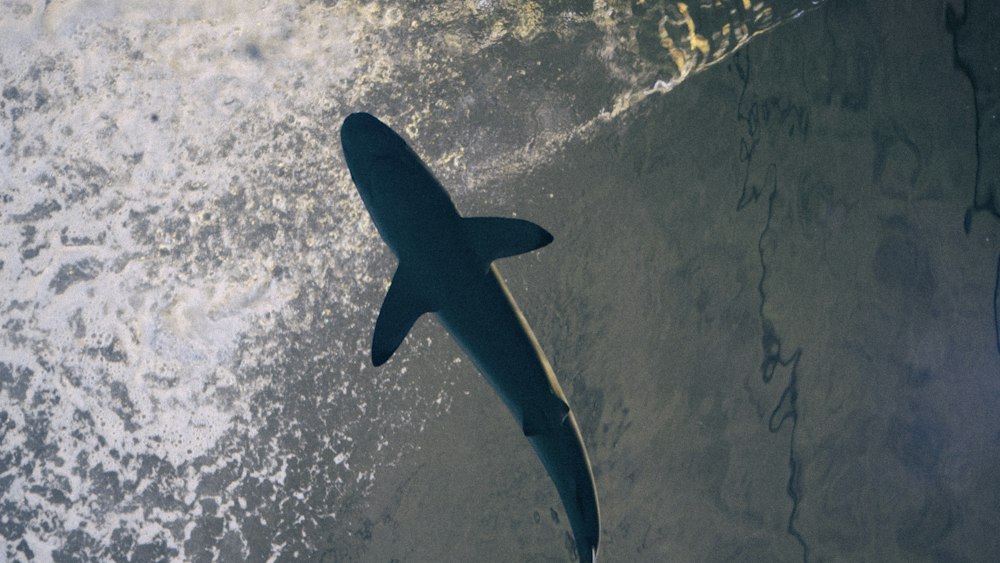
Social Behavior and Solitary Hunting Techniques
In the vast blue theater, where the curtains never draw to a close, sharks reveal a social script as intricate as any Shakespearean play. On the one hand, we see species such as the grey reef shark, which displays pack-like behaviors, circlin’ their prey with a precise choreography that only fellow sea wolves would understand. It’s a collective motion that proves there’s strength in numbers, and often, in the twistin’ tides, this tactic is a hit among our finned friends.
Yet, many sharks are the solitary actors of this underwater stage, preferring to glide silently through their liquid kingdom in their own company. The great white, for example, relies on stealth and raw power, stalking its prey with the patience of a monk and the speed of a torpedo. The scene where it explodes from the crests below, turning sea into sky in a burst of energy, is a masterclass in the art of the hunt.
Reproductive Strategies to Ensure Species Continuity
When it comes to threading the delicate balance between survival and posterity, sharks exhibit a tapestry of reproductive techniques as diverse as the species themselves. Some, like the hammerhead, perform engaging courtship dances in the deep, where females choose their suitors with a discerning eye. These rituals, as important as the hunt, ensure that only the strongest genes ripple through the gene pool.
Other sharks, on the flipper of fate, have opted for a strategy as inventive as Mother Nature herself. The leonine female tiger shark, going against the solitary current, can store the humble contribution of a male, fertilizing her eggs at a later date, when the coast is clear and conditions are optimum for her young. She’s the embodiment of independence, proving that even in the ocean, it’s not all about strong jaws and sharper teeth.
Sharks exhibit diverse reproductive techniques, with some engaging in courtship dances while others can store male contributions to fertilize their eggs at a later date, showcasing the importance of genetic strength and independence in the natural world.
Migration Patterns: Following the Food and Warmth
The annual itineraries of sharks are not mere whims but calculated trans-oceanic voyages following the food and the hug of warmer waters. Beneath the surface, the blue sharks take center stage, swaying through the sea in search of seasonal banquets, with crustaceans and squids as the main course. These migrations remind us that sharks are not aimless wanderers but driven by ancient rhythms that guide them through the deep.
These pathways, carved by instinct, also lead to assembly areas, where the social order of sharks is reaffirmed. Oceanic whitetips, not ones to shy away from company, converge in these seasonal get-togethers, hinting at a complex society beneath the waves. As they journey from pole to pole, sharks sculpt their lives to the earth’s ever-spinning cycle, becoming part of a greater whole that is in perpetual motion.
Predator Avoidance and Defense Mechanisms
Even apex predators have their Achilles’ fin. Sharks, majestic as they may be, are not without foes and thus, have developed fascinating methods to dodge danger. Camouflage is one of the most widespread techniques; for instance, the bottom-dwelling wobbegong becomes one with the ocean floor, a stealthy guardian hidden from larger threats.
Speed is another ally in the shark’s arsenal for evading predators. The mako, boasting one of the sleekest body designs in nature’s showcase, can bolt through the water with bursts that would earn a nod from Poseidon himself.
Lastly, sharks such as the spiny dogfish have their own brand of mythological protection – spines in front of their dorsal fins. While it may not be a trident, this unassuming weapon can deliver a poignant reminder to any creature that misunderstands them for prey: “Think twice before you bite.”
Adaptations to Specific Habitats
Sharks, the cartilaginous connoisseurs of adaptation, have more than just a fin in each realm of their saline empire. From abyssal plains to vibrant coral reefs, each environment becomes a page on which sharks write their survival stories, inked with evolution and cunning.
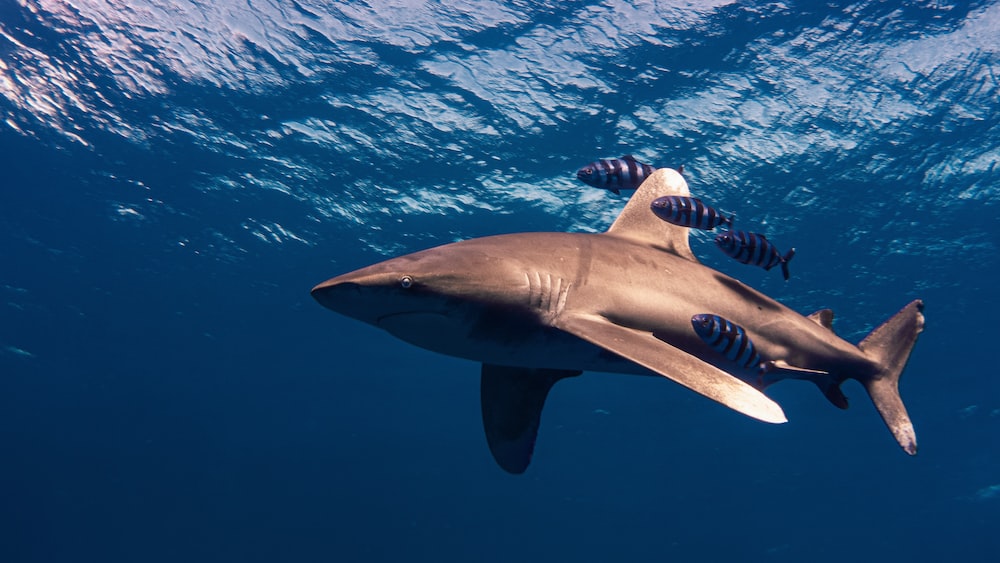
Deep Sea Mysteries: Adaptations of the Goblin Shark
Delving into the somber depths of the ocean’s twilight zone, the goblin shark reigns as a phantasmal enigma. Its flabby body and elongated snout speak volumes of a life attuned to the scarcity of deep sea. The goblin shark’s ability to thrust its jaws forward to snag prey, akin to a horror movie spectacle, is an adaptation as unusual as its habitat.
Shielded in darkness, these sharks are also equipped with skin that virtually glows, ensuring that they remain almost invisible to both prey and predators. Furthermore, their fins, navigation fins for these spectral denizens, are more muscular, granting refined control over their slow but precise movements. The goblin shark that drifts through the depths is a stark reminder that beauty in the ocean comes in many forms – and often, it’s the otherworldly kind.
Open Ocean Nomads: The Whale Shark’s Unique Traits
In the boundless blue, the whale shark, a leisurely colossus, weaves through the pelagic plains. Its gargantuan form cloaked in a constellation of spots and stripes, serves as a celestial map that baffles predators and turns the shark into a moving mystery amidst the open water.
Armed with a filter-feeding apparatus, these gentle giants sieve the sea, scooping plankton into their cavernous mouths like they’re at a continuous maritime buffet. Their massive size and propensity for the slow ballet through the ocean’s open expanses mark them as unique among their kin, as they chart their peaceful odyssey across the brine.
The whale shark’s massive size and gentle filter-feeding habits make it a unique and mysterious presence in the open ocean.
Coastal and Reef Specialists: How Smaller Sharks Thrive
Let us not forget the small but mighty dwellers of the coastal shallows and the colorful cathedrals of coral reefs. Here, sharks like the agile blacktip reef shark, exude a grace that rivals the motion of the very waves they surf. In these close quarters, the reef shark’s fins become rudders, flexing with every turn and allowing for nimble pursuits through the underwater maze.
Their diet is a diverse buffet, including crustaceans among their favored bites. These diminutive species of sharks maintain the delicate balance of their habitats, patrolling the reef like ancient knights upholding the order of their domain. It’s a role tailored to their size and skills, and one that cements their place in the ecosystem as indispensable.
The Impact of Climate Change on Shark Adaptations
Amid a world in flux, with currents of change billowing through the oceanic realm, our finned protagonists face new chapters that will test how does a shark adapt to its environment. As waters warm and storms churn with increasing fury, sharks must swim through a gauntlet of ecological shifts, their evolutionary prowess challenged as never before.
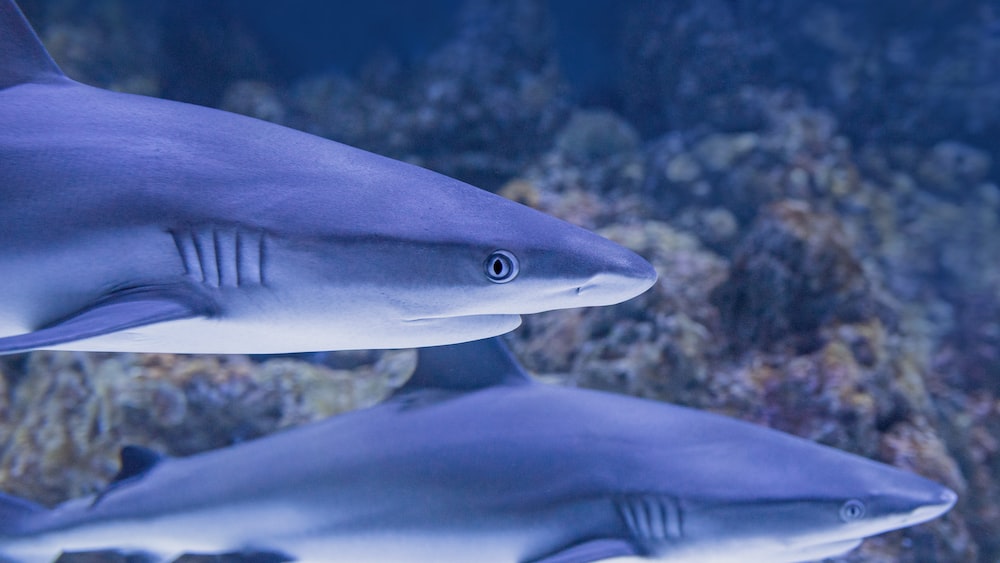
Adapting to a Changing Ocean: Thermal Tolerance and Range Shifts
As the tapestry of our planet’s climate alters with human influence, our oceanic compatriots, the sharks, are being coerced into profound adaptational changes. Thermal tolerance in sharks is their innate ability to endure varying degrees of water temperatures. Yet as our seas warm, some species, like the robust whale shark, demonstrate surprising resilience, adjusting their migratory patterns to seek the Goldilocks zone of ocean warmth.
Sharks chiefly, those with narrower thermal preferences, are embarking on range shifts, with studies revealing movements to higher latitudes as equatorial waters heat up. These shifts are not merely a lone shark deciding to pack up and move – it’s a monumental narrative of predators and prey evolving in a fluid dance with temperature. The shift, however, is double-edged; while it allows sharks to inhabit cooler waters, it also pressures local ecosystems unaccustomed to their new apex occupant.
The complexity of this situation means not all sharks can simply find a new home. Some – especially species with specialized habitat requirements or slower reproduction rates – risk being left in waters that no longer serve their physiological needs. The broader implications of these maritime migrations are profound, altering predator-prey dynamics, and may serve as an underwater reflection of the challenges all creatures face in this rapidly shifting climate.
Food Web Alterations: Challenges in Shark Diet Adaptations
Consider the intricate web of life beneath the waves – a delicate balance where sharks often sit at the top. Yet climate change is rendering this web more fragile, with shifts in fish populations and distributions posing significant challenges for our cartilaginous friends. Sharks’ diets are adapting, but the question remains: to what extent and at what cost?
The menu alterations we observe range from shifts in predatory habits to changes in available prey types. Sharks, adept hunters they are, must now navigate an underwater smorgasbord that is less predictable and more dispersed. For species like the opportunistic whale shark, a buffet of plankton may succumb to areas of ocean deserts, leading to longer travels for a decent meal – a true test of endurance for the marathon swimmers of the sea.
And what of the relationships formed over millennia between predator and prey? The subtle dance between shark and fish, shark and mammal, is changing its rhythm. As fish populations react to changing ocean conditions, moving to cooler waters or altering spawning times, sharks must quickly learn new steps to this dance or face a future where their once-abundant tables are woefully sparse.
Sharks are facing significant challenges due to climate change affecting their food sources and the delicate balance of life beneath the waves.
Conservation Efforts to Protect Sharks in a Warming World
The race to safeguard our finned companions from a warming world is on, with conservationists forging innovative pathways to preserve these vital marine players. Initiatives taking center stage involve protection of nursery habitats, ensuring that the vulnerable young have a fighting chance to grow and thus maintain population numbers.
Scientific research has become the lifeblood of conservation, driving policies and public awareness. Tagging and tracking programs advance our understanding of shark habitats and migratory patterns, equipping us to craft informed and efficacious measures. With this knowledge, we can establish marine protected areas that act as sanctuaries, not just anomalies, providing sharks with realms where they can thrive amidst the changing tides of the climate.
FAQs
1. How do sharks’ physical adaptations contribute to their hunting success?
Sharks’ physical adaptations significantly contribute to their hunting prowess. With streamlined bodies and powerful tails, sharks cut through the water with astonishing speed, tailoring attacks in a blink. Revolving teeth ensure consistent sharpness for efficient capture and consumption of prey, embodying the concept that in the marine world, the best equipped are often the last swimming.
2. What sensory adaptations do sharks have that aid in their survival?
The sensory adaptations of sharks aid immensely in their survival. Electroreception allows these marine masters to detect minute electrical fields, making the hidden visible in the ocean’s vast theatre. Combining this with an acute sense of smell enables sharks to pinpoint prey with precision across distances worthy of underwater legend.
3. How have sharks adapted to different habitats within the ocean?
Sharks have adapted to different ocean habitats with remarkable versatility. From the deep-sea goblin shark employing bio-fluorescence to navigate the abyssal darkness, to the coastal reef sharks exhibiting colors that meld with the ocean floor, each species tailors its existence masterfully to its chosen marine niche.
4. What are the challenges sharks face due to climate change, and how might they adapt?
The challenges sharks face because of climate change include habitat loss, altered prey distribution, and shifts in breeding patterns. In response, sharks may display adaptability in hunting techniques, altering migrations to chase colder waters, or even fast-tracking their growth to an earlier reproductive age – nature’s gamble in the face of a rapidly shifting environment.
Conclusion
As the curtain falls on our exploration, one cannot help but marvel at how does a shark adapt to its environment in such fascinating and agile ways. Our journey through the depths has revealed that whether shaped by evolution or the pressures of a changing climate, the tenacity of these oceanic inhabitants is a testament to the resilience of life in our blue planet’s most expansive wilderness.
However, while sharks navigate the tides of change, they do so swimming against a current of human-induced challenges. It will take more than just evolutionary brilliance for these creatures to continue thriving; it’ll take concerted human efforts in conservation and sustainable living. So, as I sign off, dear reader, I leave you with a reflective ripple to ponder: how can our actions on land make a sea of difference for the lives veiled beneath the waves?
Farewell, and may your every splash lead to a new discovery.
Jasper Flynn

